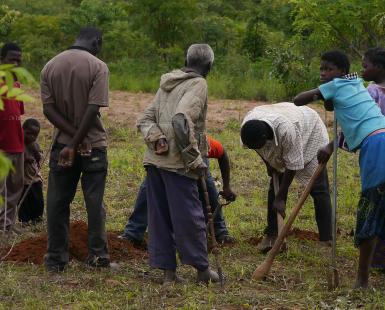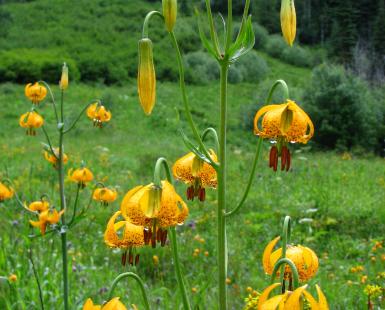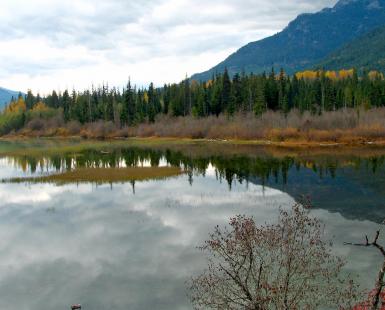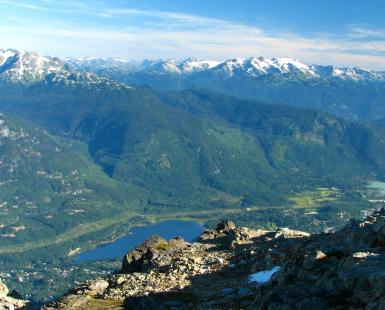Case Studies
Brinkman Earth Systems, working for the Province of British Columbia, led the process of adapting the British Columbia Forest Carbon Offset Protocol to the Verified Carbon Standard.
Features
Case Study
Soil Carbon Quantification Methodology
Soil carbon, especially in the form of soil organic matter, is one of the major ecosystem carbon pools, and plays an important role in soil moisture retention and fertility. Enhancing soil carbon pools through Sustainable Agricultural Land Management (SALM) is an important modality for sequestration of atmospheric carbon, with the added benefit of enhancing agricultural soil productivity and resiliency. While the soil carbon impacts of SALM activities can be estimated...
Case Study
Tree Farm License 1 Valuation
Tree Farm License 1 and it’s associated timber license were part of the assets of Skeena Cellulose when it went into receivership. Working with Brinkman Forest, Coast Tsimshian Resources, a company owned by the Lax Kw’alaams First Nation, purchased the forest assets out of the receivership. During negotiations for the purchase, Brinkman Earth Systems worked with Brinkman Forest to develop an integrated timber supply and financial model for the licenses, for the purposes...
Case Study
PT. Tanjung Redep Hutani Management Plan
PT. Tanjung Redep Hutani operates a timber license and associated pulp mill in East Kalimantan, Indonesia. Fiber production from the plantations under the existing silviculture regime had not proven sufficient to sustainably supply the mill, resulting in a requirement to purchase more expensive fiber from other sources.
Brinkman Earth Systems was hired by PT. Tanjung Redep Hutani (TRH) to develop an integrated silviculture and timber supply...
Case Study
Pico Bonito project
Deforestation for subsistence agriculture is common in many parts of the tropics, whether for the creation of permanent agricultural land, or as part of a swidden agricultural system. While some swidden systems are sustainable, global population growth means that net deforestation for subsistence agriculture continues to fragment and reduce tropical forest areas. However, reducing the impacts of subsistence agriculture requires providing alternative livelihoods, or...
Case Study
Tropical forest restoration plan
Cultivation of oil palm provides food, biofuels, and livelihood opportunities throughout much of the tropical world. However, significant areas of oil palm cultivation have been undertaken on lands cleared of high diversity tropical forests. In some cases, these plantations have been illegally established on areas that were reserved for conservation values. Restoring these areas is both socially and ecologically complex. Cleared areas which are not tended become...
Case Study
COMACO Zambia integrated landscape project
Community Markets for Conservation (COMACO), a Zambian NGO, has been working for many years to achieve conservation results through community engagement, agricultural practice improvement, and fair trade in Eastern Province, Zambia. This history set the stage for a unique GHG offset project, combining reduced deforestation (REDD+) and soil improvement through enhanced farming practices (SALM). Brinkman Earth Systems worked with COMACO and C-Quest Capital to assess the...
Case Study
New Mexico rangeland restoration
Rangelands globally have been degraded by a combination of overgrazing, fire suppression, invasive species, and other impacts. Working with The Earth Partners, Brinkman Earth Systems surveyed and sampled soils on rangelands in New Mexico which had been impacted by invasion of native juniper and pine species. Prior to management commencing on these lands, frequent fires maintained these areas in grassland or very open savannah conditions. With the reduction in range...
Case Study
Silvopasture Economics
Integrating food production with other land uses provides a key opportunity to diversify local economies while enhancing food supply resiliency and producing other key products. In British Columbia, landscapes in the drier interior have traditionally been managed for both timber production and extensive grazing of native grass species. By using silvopasture techniques such as seeding of agronomic grass and legume species in parallel with reforestation after harvest,...
Case Studies British Columbia
Cheakamus Community Forest
The Cheakamus Community Forest (CCF) in beautiful Sea-to-Sky country is enjoyed by millions of locals, British Columbians and international visitors each year. Originally logged under tenure to the major logging companies, in 2009, harvest rights on these crown lands were handed over to the community via a Community Forest Agreement. The 32,000 ha community forest is a partnership between the Resort Municipality of Whistler, the Lil’wat...






 520 Sharpe Street, New Westminster, BC V3M 4R2
520 Sharpe Street, New Westminster, BC V3M 4R2 (604) 521-7771
(604) 521-7771

